
The Ford Anglia is a small family car which was designed and manufactured by Ford UK. It is related to the Ford Prefect and the later Ford Popular. The Anglia name was applied to various models between 1939 and 1967. A total of 1,594,486 Anglias were produced. It was replaced by the Ford Escort.

Reliant Motor Company was a British car manufacturer based in Tamworth, Staffordshire, England. It was founded in 1935 and ended car production in 2002, the company had been known as "Reliant Motor Company" until the 1990s when it became "Reliant Motors" and then finally became "Reliant cars LTD" after production had ended of the Robin as the company was restructured to be a car import business, it's now a dormant company and the only entity left is a separate parts company created called Reliant Partsworld who produce parts for Reliant vehicles.
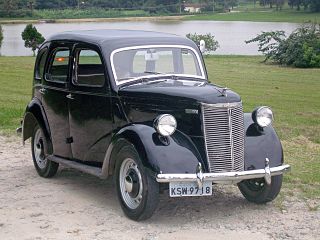
The Ford Prefect is a line of British cars which was produced by Ford UK between 1938 and 1961 as an upmarket version of the Ford Popular and Ford Anglia small family cars. It was introduced in October 1938 and remained in production until 1941. Returning to the market in 1945, it was offered until 1961. The car progressed in 1953 from its original perpendicular or "sit-up-and-beg" style to a more modern three-box structure. Some versions were also built and sold by Ford Australia.

The Standard Motor Company Limited was a motor vehicle manufacturer, founded in Coventry, England, in 1903 by Reginald Walter Maudslay. For many years, it manufactured Ferguson TE20 tractors powered by its Vanguard engine. All Standard's tractor assets were sold to Massey Ferguson in 1959. Standard purchased Triumph in 1945 and in 1959 officially changed its name to Standard-Triumph International and began to put the Triumph brand name on all its products. A new subsidiary took the name The Standard Motor Company Limited and took over the manufacture of the group's products.
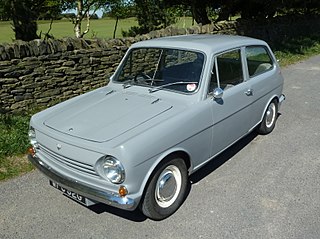
The Reliant Rebel is a small four-wheeled car that was produced by Reliant between 1964 and 1974. It was designed by Reliant to be a market test to push Reliant into other parts of the market instead of just 3-wheelers.
Alvis Car and Engineering Company Ltd was a British manufacturing company in Coventry from 1919 to 1967. In addition to automobiles designed for the civilian market, the company also produced racing cars, aircraft engines, armoured cars and other armoured fighting vehicles.

Walter Owen Bentley, MBE was an English engineer who founded Bentley Motors Limited in London. He was a motorcycle and car racer as a young man. After making a name for himself as a designer of aircraft and automobile engines, Bentley established his own firm in 1919. He built the firm into one of the world's premier luxury and performance auto manufacturers, and led the marque to multiple victories at the 24 Hours of Le Mans. After selling his namesake company to Rolls-Royce Limited in 1931, he was employed as a designer for Lagonda, Aston Martin, and Armstrong Siddeley.
The Austin Cambridge is a motor car range produced by the Austin Motor Company, in several generations, from September 1954 through to 1971 as cars and to 1973 as light commercials. It replaced the A40 Somerset and was entirely new, with modern unibody construction. The range had two basic body styles with the A40, A50, and early A55 using a traditional rounded shape and later A55 Mark IIs and A60s using Pininfarina styling.

The Aston Martin DB6 is a grand tourer made by British car manufacturer Aston Martin and was produced from September 1965 to January 1971.
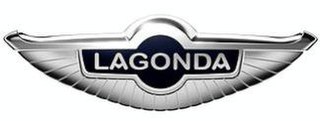
Lagonda is a British luxury car brand established in 1906, which has been owned by Aston Martin since 1947. The trade-name has not had a continuous commercial existence, being dormant several times, most recently from 1995 to 2008 and 2010 to 2013.

The Aston Martin Virage is an automobile produced by British luxury automobile manufacturer Aston Martin as a replacement for its V8 models. Introduced at the Birmingham Motor Show in 1988, it was joined by the high-performance Vantage in 1993, and then the name of the base model was changed to V8 Coupé in 1996.

Albion Motors was a Scottish automobile and commercial vehicle manufacturer.

The Lagonda 2.6-Litre is an automobile produced in the United Kingdom by Lagonda from 1948 to 1953. It was the first model from that company following its purchase by David Brown in 1947 and was named for the new straight-6 engine which debuted with the car. The so-called Lagonda straight-6 engine was designed by W. O. Bentley and would propel Lagonda's new parent company, Aston Martin, to fame.

The Lagonda 3-Litre is an automobile which was produced by Aston Martin Lagonda from 1953 to 1958. It was the second Lagonda model of the David Brown/Aston Martin era. The 3-Litre was fitted with a higher displacement 2.9 L 140 bhp version of the twin overhead camshaft Lagonda Straight-6 engine designed by Walter Owen Bentley.
Morris Cowley was a name given to various cars produced by Morris from 1915 to 1958.
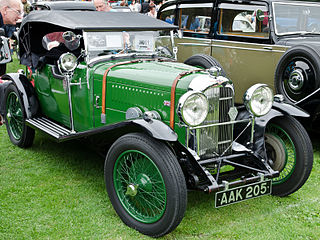
The Lagonda Rapier was a small car produced by the British Lagonda company from 1934 to 1935. A few more were subsequently produced by the independent Rapier Car Company.

The Rover 12 was a name given to several medium-sized family cars from the British Rover car company between 1905 and 1948.

The Flying Standard Fourteen is an automobile produced by the British Standard Motor Company from 1936 to 1940 announced in October 1936. The other Flying Standard models had been announced twelve months earlier. A standard is a flag and the reference to flying standards is to flying flags as well as to the advertised abilities of the cars.
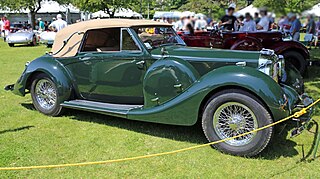
The Lagonda V12 is a large car produced by the British Lagonda company from 1938 to 1940. It was first shown at the 1936 London Motor Show but production did not commence until 1938.

The Lagonda 14/60 was a sports touring car introduced by Lagonda in 1925. Production of the 14/60 continued until 1931. As well as the standard car there were variants called the 2 Litre Speed (1927–33) and Continental.


















